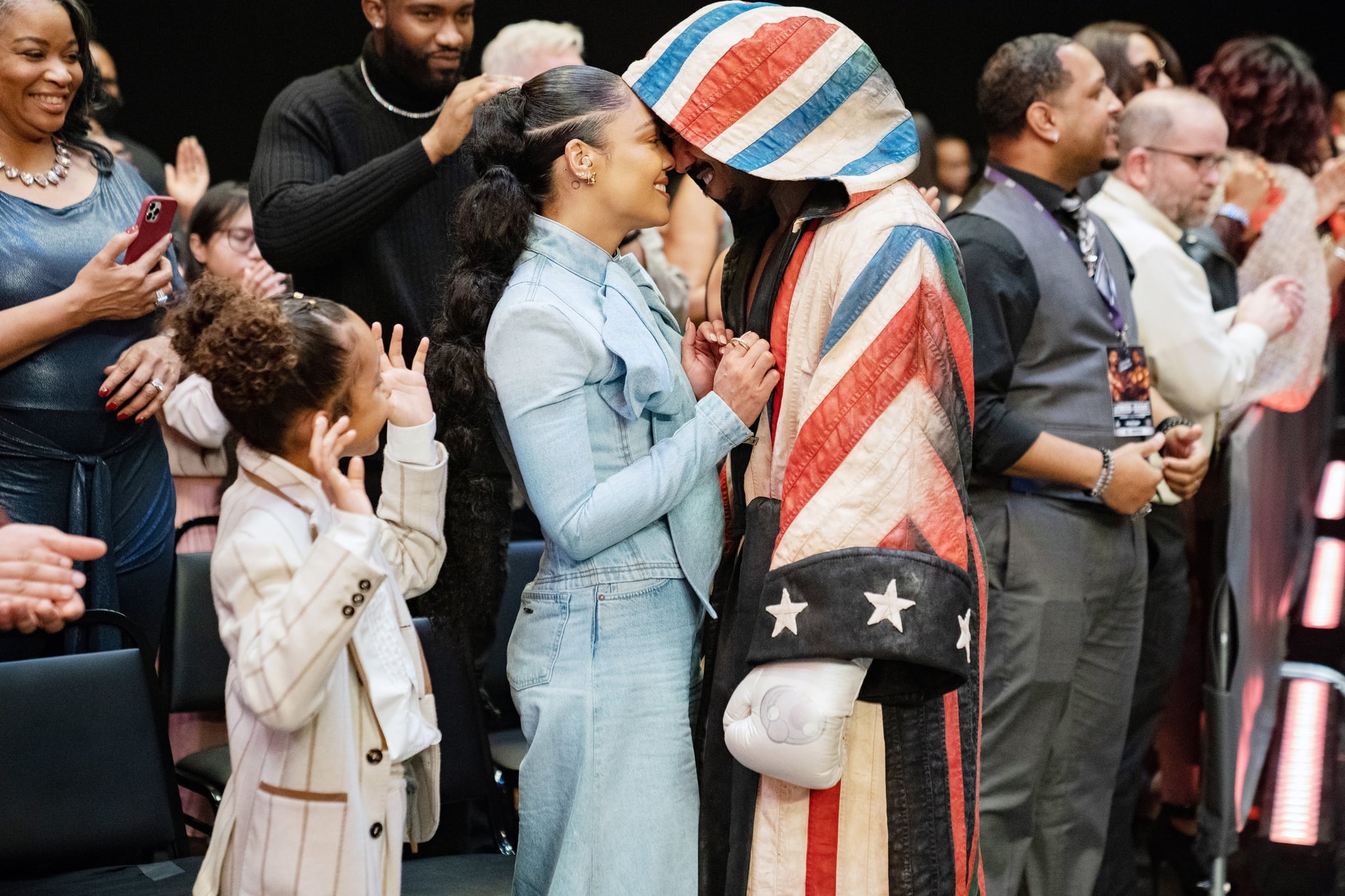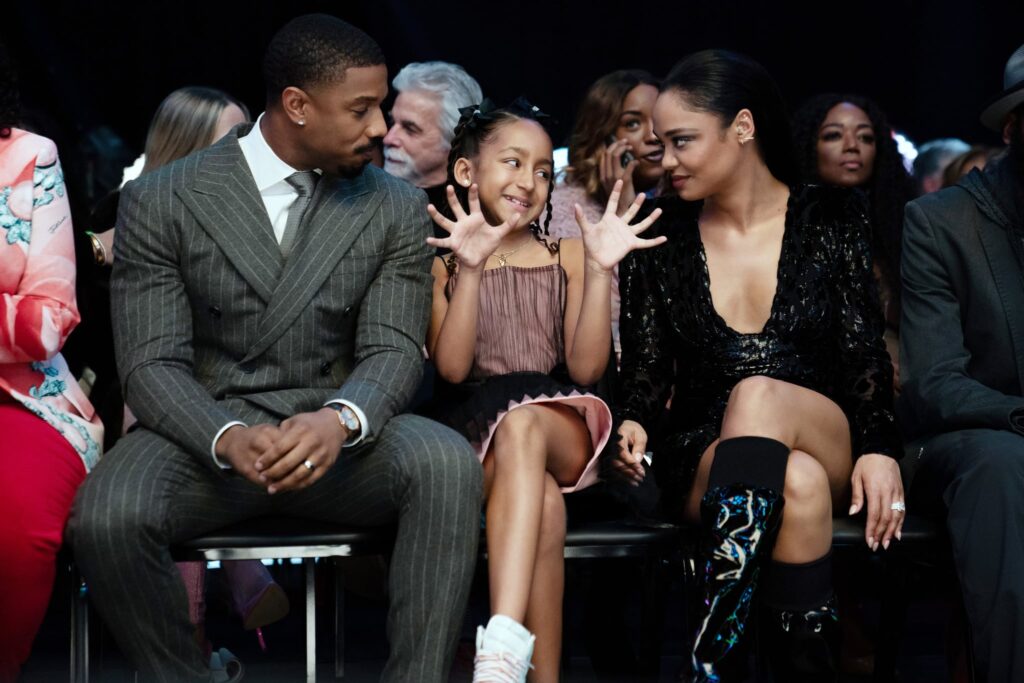Authentic Deaf representation in film continues to be an uphill battle. But there’s something positive to celebrate this month: the highly-anticipated “Creed III,” directed by and starring Michael B. Jordan, has lived up to the hype — and not least because it has shed light on the Deaf community through the character of Amara Creed, played by Deaf actress Mila Davis-Kent.
Although the film industry continues to move forward with representation (see: “Coda” star Troy Kotsur becoming the first Deaf actor to win an Oscar last year), Deaf actors are still frequently overlooked for Deaf or hard of hearing (HOH) roles. This film — which is a sequel to 2018’s “Creed II” and follows Adonis “Donnie” Creed (played by Jordan), who reconnects with his childhood friend Damian (Jonathan Majors) — did the work to bring accurate and positive representation of Deaf individuals to the entire “Rocky” franchise.
I rushed to see it with my sibling, and as a Black, Deaf, LGBTQ writer, I’m always excited to see my own experiences reflected back in the media. This movie definitely hit all the right notes. So let’s break it down.
Why Authentic Casting Matters
First things first: Bianca (played by Tessa Thompson), Donnie’s wife and Amara’s mother, has been a character since the first installment, and she is hard of hearing. However, Thompson is a hearing actor. In contrast, Davis-Kent is a Deaf actress playing a Deaf girl. This was a deliberate, and incredibly important, decision: casting directors for “Creed III” put out a nationwide search to find a Deaf child to play the character. This type of top-down approach not only provides a platform for Deaf actors; it also ensures that authenticity, including the use of American Sign Language (ASL), permeates the movie.
In an interview with Sherri Shepherd, Davis-Kent and Jordan talked about the experience shooting “Creed III.” As Jordan explained, what he saw in the young actress was “the confidence and the light in her eyes — whenever I saw her on screen, it just made me feel like, OK, this little girl has it,” he told Shepherd. “Her entire family’s Deaf, you know, her brothers and her sisters, so just to see that community and that family really helped out and informed me on how to actually capture . . . an ASL family. So I’m just completely indebted to Mila and her mom and her entire family.”
That more directors like Jordan are starting to clearly recognize how important it is to have Deaf actors portray Deaf characters is refreshing, an undeniable step forward.
Positive Representation, Finally
Historically, even when Deaf characters are featured in a movie, their deafness often tends to be the major plot point for the character. We do see this with Bianca, in that she decides to step back from singing and move into producing. Of course, this plays into a trope you often hear about: people fear that losing their hearing would mean not being able to sing or listen to music.
However, many of us who are Deaf or HOH listen to music and/or sing. I started losing my hearing as a teenager, and have been singing ever since I was little. I didn’t, and still don’t, want to give it up. In college, I utilized an FM system connected to my hearing aids, interpreters, and a personal voice coach to be able to sing in the choir. I even got a solo when we were touring. Any song I couldn’t get just right, I would sign the song. It would be great to see a character like Bianca embrace singing again in the future.
Amara, though not a major character in the film, doesn’t quite follow the same path as Bianca. Instead, her character adds depth to the storyline and also simply shows the normal life of a kid who has a boxing champ for a father and a music producer for a mother. She just happens to be deaf, and we get a glimpse of the Deaf community through her because of that. The Creed family accepts Amara’s deafness and provides her with all the access anyone else should have. Refreshingly, her deafness isn’t a subplot about a family’s struggle with a deaf daughter.

“Creed III” also highlights the importance of sign language as the primary mode of communication in Deaf spaces. Amara goes to a Deaf school, and after getting into a fight, her parents are called to the school. Donnie says something under his breath, and Bianca quickly nudges him and signs the word “sign.” I’ve seen this scenario play out at Deaf events where hearing individuals, or even hard of hearing individuals, may unintentionally exclude Deaf individuals by relying on spoken language. The addition of this small and subtle piece was *chef’s kiss.* It showed just how deeply the filmmakers cared to learn about nuances within the community.
Accessibility In and Out of the Home
The Creed family’s mansion also has features that allow for better access and communication for the Deaf and HOH members of the family — including flashing lights for the doorbell and glass floors in certain parts of the house, which allow the family to communicate from separate floors. All of this is modeled after a type of architecture known as DeafSpace, or the art of designing interiors and home spaces for deaf people.
True representation can only be achieved when we are involved.
One very subtle, but important, aspect of the movie’s representation was the presence of an interpreter at all the boxing matches. This highlights the importance of access for Deaf and HOH individuals, who are often denied access to interpreters in public arenas and especially at sporting events. Of course, it should not be lost on audiences that the privilege of having Donnie as her father may help with that access for Amara.
I’ll never forget being asked to sign the National Anthem at my college graduation in 2016. I was supposed to be on stage with the choir. Instead, I was ultimately pushed to the side of the room; no one could see me unless they squinted up to a screen on the ceiling, where I was featured in a small box.
But as Justina Miles’s historic performance interpreting ASL for Sheryl Lee Ralph and Rihanna at this year’s Super Bowl shows, this type of interpretation is lauded by audiences and should be a fixture everywhere. I’m grateful times are changing, and hopefully movies like “Creed III” and other high-profile performances will normalize putting interpreters and Deaf performers front and center.
A Lasting Impact
The “Creed” series, no doubt, has allowed people who are HOH or deaf to see themselves reflected in film. For many who are HOH, that came from a connection they felt to Bianca in the very first film. Now, with the positive reception of Amara’s character in “Creed III,” audiences are making it clear that they’re open to seeing more authentic representation of the Deaf community.
As a writer who tries to create diverse casts of characters in my own work, there’s always the fear of watching similar characters fall flat in box-office hits. However, as more directors, producers, writers, and agencies prioritize authenticity, that fear is slowly subsiding. Deaf actors, writers, producers and directors deserve the same opportunities as anyone else, and it is important for the industry to continue elevating their perspectives.
What’s more, the Deaf community, just like any other community, is not monolithic. It is crucial for the media to reflect the diversity within the Deaf and hard of hearing community, including different identities, experiences, and the use of various forms of communication. The “Creed” franchise has the unique opportunity to provide positive representation for both late-deafened signers, like myself, and those who are born Deaf; we are all integral parts of the same community. But, again, true representation can only be achieved when we are involved.
From casting a Deaf actor in a Deaf role to showcasing ASL as a primary form of communication, this film is a good first step, but it’s still just a step. As we await the next film, I can’t help but wonder if we will see more of Amara and the Deaf community in the future. We can only wait and see. And maybe, just maybe, Amara will follow in her father’s footsteps to become the next champion.

